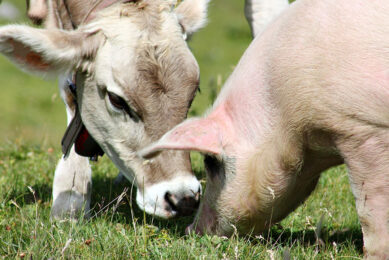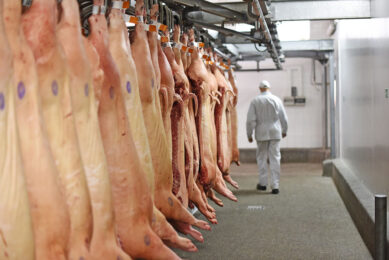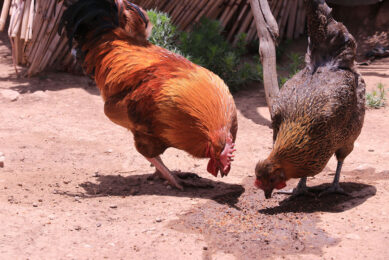My name is John D. – I am a feed-designer
When we are looking at the development of the food-industry, the challenge is to develop new products that please the consumer (and the profit margin of the retailer). You can ask yourself what should be the effect of this for the complete chain?
When we are looking at the development of the food-industry, the challenge is to develop new products that please the consumer (and the profit margin of the retailer). You can ask yourself what should be the effect of this for the complete chain?
Food design
When we take a closer look at food design, we see that these men and women are young artists, who are doing strange things with food, with no respect for history or tradition. They only concentrate on taste and the way the product is satisfying the consumer. This way of thinking is not only a change for agrculture but also pose a challenge.
When we take a closer look at food design, we see that these men and women are young artists, who are doing strange things with food, with no respect for history or tradition. They only concentrate on taste and the way the product is satisfying the consumer. This way of thinking is not only a change for agrculture but also pose a challenge.
Examples are sometimes crazy; for instance fried red cabbage, smoothies made from a mixture of all types of fruit and vegetables, energy drinks from pressed wheatgrass, etc. Not only new products are developed but also new ingredients and new technology – food-design starting at the basics.
Standard feed
But let us take this idea into the feedmill. Here we produce optimum feed for the animals; optimized on costs, energy content, health of the animal etc. In general a few types of feed are produced for a big group of customers. But we also see that more and more large farmers have their own demands and specify their own feed. Relevant in this is the discussion that Emmy started in her blog on garlic. What can this new ingredient mean for the feed-industry?
But let us take this idea into the feedmill. Here we produce optimum feed for the animals; optimized on costs, energy content, health of the animal etc. In general a few types of feed are produced for a big group of customers. But we also see that more and more large farmers have their own demands and specify their own feed. Relevant in this is the discussion that Emmy started in her blog on garlic. What can this new ingredient mean for the feed-industry?
From factory to kitchen
This is not only a challenge for the system-integrators to control such a mill, but also for the machinery manufacturers. "Do we have all the equipment we need?" "Are there new machines we do not now yet about?"
Feed-designer
In the mean time this development is also asks for other changes. It requires a new kind of employee in the feedmill: a feed-designer – someone creative in using the equipment and ingredients, to develop new feed products. Not only in regard to the needs of energy and health of the animals, but also looking for new opportunities in the complete feed to food chain. It is a cliché but it requires feed-designers who can think "out of the box".
In the mean time this development is also asks for other changes. It requires a new kind of employee in the feedmill: a feed-designer – someone creative in using the equipment and ingredients, to develop new feed products. Not only in regard to the needs of energy and health of the animals, but also looking for new opportunities in the complete feed to food chain. It is a cliché but it requires feed-designers who can think "out of the box".
Daily practice?
Writing this blog made me realise I was already doing this for some years. Every time my daughters did not feed their rabbit I told them that I would give it herbs to make "Sate Rabbit". Maybe this is an idea the first feed designer can work out. Compose chicken feed for better "Sate Ajam".
If we take a closer look at this development we see that this should have consequences for the feedmills-of-the-future. The Magi-con feedmill at Saweco, Oirlo, The Netherlands, is basically already constructed as a kitchen. The engineers did not design a mill for the production of one type of feed, but developed one where you can "cook" feed to the demanded specifications of the market.
Join 26,000+ subscribers
Subscribe to our newsletter to stay updated about all the need-to-know content in the feed sector, three times a week. Beheer
Beheer









 WP Admin
WP Admin  Bewerk bericht
Bewerk bericht